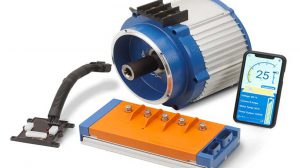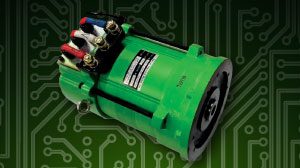QUESTION:
How can I test my PDS electric motor? N.K. from Maine
ACCORDING TO ROGER:
This is a frequently asked question. This can be a little tricky if you do not follow procedures. In working with our motor department lead Tim DeWitt we have put together the following “tech tip”.
Before any testing is done you must discharge the controller first. This procedure is used on all SepEx motor systems. Note: failure to “discharge” the controller can cause catastrophic controller failure!
To Discharge A Controller:
A) Turn Off Key Switch
B) Place Run/Tow Switch In Tow Position
C) Place Forward/Reverse Switch In Neutral Position (if equipped)
D) Disconnect The Last Battery Negative Connection To Battery Pack (battery number 6 or number 4 on four battery pack arrangements) And Any
Other Accessory Wires.
E) Turn Key Switch To On Position, Forward/Reverse Switch To Reverse Position, And Run/Tow To Run Position.
F) Depress And Hold Accelerator Pedal For 30 Seconds
G) Turn Key Switch Off
H) Place Forward/Reverse Switch In Neutral Position
I) Place Tow/Run In Tow Position
J) Disconnect F1 And F2 At Controller
K) Disconnect Last Positive Connection To Battery Pack (battery number 1)
You can now work on the car as needed. When work is completed reconnect all cables and connect battery negative cable last.
Caution! Failure to “discharge” the controller can cause catastrophic controller failure!
Testing SepEx Motor:
Again, follow controller discharge instructions. Many times controller failure is due to motor shorts or grounds. A shorted motor will damage a new controller!
L) Disconnect F1, F2, A1 And A2 On Motor
M) Using An Ohmmeter Check Resistance From A1 To A2 (on motor, not cables) any reading other than “open” is good. However, it should be close to a full continuity.
N) Check from F1 to F2 (some motors can be marked S1 and S2) with an ohmmeter and you should read 1 to 3 ohms resistance.
O) Check all four terminals for a ground with ohmmeter still set at low ohms. You should not have any low resistance readings (close to continuity) from terminals to ground. If the motor fails any of these tests it is either grounded or shorted. Again, a shorted motor will damage a new controller so make you perform this test!
Test Running A SepEx Motor:
P) Remove all four cables from motor; connect a jumper wire from A1 to F1 and connect a jumper wire from A2 to F2 terminals. Connect a 12 volt or 24 volt positive voltage to A1/F1 terminal. Connect 12 volts or 24 volts negative voltage to A2/F2 terminals. The motor should now run. Switch F1 and F2 for motor reversal. Caution: do not run motor at high rpm’s or you can have catastrophic failure!
As with any testing adhere to any safety precautions and eye protection!











